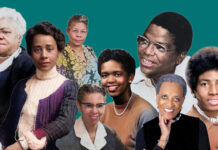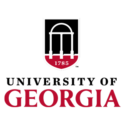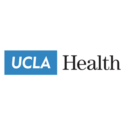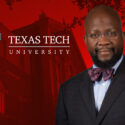![]() For the past 29 years, JBHE has collected Black student admissions data from the highest-ranked liberal arts colleges. Over this long period, there have been 14 years when Amherst College in Massachusetts reported the highest percentage of Black first-year students. On six occasions, Wesleyan University in Middletown, Connecticut, had enrolled the highest percentage of Black first-year students.
For the past 29 years, JBHE has collected Black student admissions data from the highest-ranked liberal arts colleges. Over this long period, there have been 14 years when Amherst College in Massachusetts reported the highest percentage of Black first-year students. On six occasions, Wesleyan University in Middletown, Connecticut, had enrolled the highest percentage of Black first-year students.
Six years ago, there were 87 Black first-year students at Amherst. They made up a whopping 18.2 percent of the first-year class. At that time, this was the largest percentage of Black first-year students at any of the high-ranking liberal arts colleges in the history of the JBHE survey. Two years ago, Amherst College sat on top of the survey and the college set a new standard. There were 81 Black students in the 2020 entering class. They make up 18.7 percent of the first-year class. This was the largest percentage of Black students in an entering class in the history of our surveys of both high-ranking liberal arts colleges and the nation’s leading research universities.
Last year, Amherst College set another new standard. There were 100 Black students in the class entering in the fall of 2021. They make up 19.5 percent of the Class of 2025. Now, for the first time in the 30-year history of the JBHE surveys, a college has enrolled a first-year class that is more than one-fifth Black. There are 96 Black students in this year’s entering class. They make up 20.6 percent of the total.
Black First-Year Enrollments at High-Ranking Liberal Arts Colleges,
Class of 2026
School | Total Enrollment | Black Enrollment | % Black |
|---|---|---|---|
| Amherst College | 467 | 96 | 20.6 |
| Swarthmore College | 434 | 77 | 17.7 |
| Pomona College | 414 | 56 | 13.5 |
| Harvey Mudd College | 238 | 31 | 13.0 |
| Haverford College | 363 | 46 | 12.7 |
| Bowdoin College | 508 | 56 | 11.0 |
| Wesleyan University | 753 | 77 | 10.2 |
| Mt. Holyoke College | 544 | 54 | 9.9 |
| Grinnell College | 438 | 43 | 9.8 |
| Claremont McKenna College | 322 | 28 | 8.7 |
| Vassar College | 681 | 57 | 8.4 |
| Colgate University | 814 | 61 | 7.5 |
| Oberlin College | 822 | 60 | 7.3 |
| Davidson College | 542 | 39 | 7.2 |
| Bucknell University | 1,034 | 69 | 6.7 |
| Washington & Lee Univ. | 476 | 32 | 6.7 |
| Macalester College* | 552 | 36 | 6.5 |
| Smith College* | 619 | 39 | 6.3 |
| Trinity College | 565 | 35 | 6.2 |
| Hamilton College | 481 | 29 | 6.0 |
| Bates College | 519 | 30 | 5.8 |
| Lafayette College | 757 | 39 | 5.2 |
| Bryn Mawr College | 396 | 16 | 4.0 |
Notes: Colleges are ranked by the highest percentage of Black first-year students.
Some information obtained from public sources.
*Institutions supplying numbers in accordance with Dept.of Education guidelines - no foreign or biracial students. (See text.)
Swarthmore College in Pennsylvania has 77 Black students in this year’s entering class. They make up 17.7 percent of the first-year students. This is the seventh year in a row that Swarthmore has ranked in the top 5 in our survey. A year ago there were 68 Black first-year students at the college, making up 14.9 percent of the entering class.
Six years ago, for the first time in the history of our survey, Pomona College in Claremont, California, had the highest percentage of Black students in the entering classes at the nation’s leading liberal arts colleges. There were 65 Black first-year students at Pomona College that year. They made up 15.8 percent of the entering class. Five years ago, Pomona dropped to fourth place with an entering class that was 12.6 percent Black. Four years ago, once again Pomona sat atop our rankings. Pomona had 67 Black first-year students, up from 52 the previous year. Blacks were 16.3 percent of the first-year class. Last year Pomona College ranked in fifth place with an entering class that was 13.5 percent Black. This year Pomona moves up to the third position with an entering class that is 13.5 percent Black.
While the achievements of Amherst College, Swarthmore College, and Pomona College in attracting Black students can not be overstated, an equally compelling tale has taken place at Harvey Mudd College in Claremont, California, which bills itself as the nation’s top liberal arts college of engineering, science, and mathematics.
Thus, it may be a surprise to many readers, that Harvey Mudd College ranks fourth in our survey this year with an entering class that is 13 percent Black. A year ago, Blacks make up 17.7 percent of the entering class. Two years ago, Blacks made up 8.6 percent of the students in the entering class. In 2009, Harvey Mudd College ranked last in our survey in the Black percentage of first-year students. That year there were only three black students in the entering class. They made up just 1.4 percent of all entering students.
In 2019, Harvey Mudd College accepted only 13.7 percent of all applicants. But the acceptance rate for Black applicants was 35 percent. Blacks made up 10.7 percent of the entering class in 2019. For the past three years, the college has declined to provide JBHE with data on the acceptance rate of Black students.
Three other liberal arts colleges that responded to our survey had entering classes that were more than 10 percent Black. They are Haverford College in Pennsylvania, Bowdoin College in Maine, and Wesleyan University in Connecticut.
Mount Holyoke College had Black enrollments of just under 10 percent. A year ago, only 3.8 percent of the entering students were Black. The number of Black students in the first-year class increased from 18 last year to 54 this year.
In 2009, only three of the nation’s high-ranking liberal arts colleges had entering classes that were at least 10 percent Black. Three years ago there were nine. For the past two years, eight colleges had an entering class that is at least 10 percent Black. This year, there are seven. The fact that several leading liberal arts colleges did not respond to our survey this year may have impacted these totals.
One-Year Gainers and Losers in Black First-Year Enrollments at High-Ranking Liberal Arts Colleges
| School | 2021 | 2022 | % Change |
|---|---|---|---|
| Mt. Holyoke College | 18 | 54 | +200.0 |
| Bucknell University | 33 | 69 | +109.1 |
| Grinnell College | 24 | 43 | +79.2 |
| Smith College | 34 | 39 | +14.7 |
| Swarthmore College | 68 | 77 | +13.2 |
| Bowdoin College | 51 | 56 | +9.8 |
| Vassar College | 54 | 57 | +5.6 |
| Davidson College | 39 | 39 | 0.0 |
| Macalester College | 36 | 36 | 0.0 |
| Amherst College | 100 | 96 | -4.0 |
| Pomona College | 61 | 56 | -8.2 |
| Lafayette College | 43 | 39 | -9.3 |
| Haverford College | 51 | 46 | -10.1 |
| Colgate University | 69 | 61 | -11.6 |
| Oberlin College | 71 | 60 | -15.5 |
| Hamilton College | 35 | 29 | -17.1 |
| Washington & Lee Univ. | 39 | 32 | -17.9 |
| Wesleyan University | 95 | 77 | -18.9 |
| Harvey Mudd College | 41 | 31 | -24.4 |
| Bates College | 59 | 30 | -49.2 |
Note: Only colleges that reported data in both 2021 and 2022 are included.
Source: JBHE Research Department
Only three leading liberal arts colleges for which we have data have entering classes that are less than 6 percent Black. They are Lafayette College, Bates College, and Bryn Mawr College.
In 2020, enrollments were down at many liberal arts colleges due to the pandemic. So it came as no surprise that in 2021, Black enrollments were up at almost all leading liberal arts colleges. Accepted students at many colleges took a gap year resulting in abnormally large entering classes a year ago. Thus, as we have returned to a more normal admission cycle, the number of entering students – including African American students – is down at many schools.
In addition to the huge increase at Mount Holyoke mentioned earlier, there were large increases in Black students at Bucknell University in Lewisburg, Pennsylvania, and Grinnell College in Iowa. One reason for the large increase at Bucknell University was that the university included all domestic and international students who identified as Black. In the past, the university only used reporting methods called for by the U.S. Department of Education. (See next paragraph.)
A Note on Methodology
Before we continue with the results, it is important to mention how the U.S. Department of Education collects data on the race of undergraduates. Before a change was made several years ago, students who reported more than one race (including African American) were included in the figures for Black students. This is no longer the case. Thus, students who self-identify as biracial or multiracial with some level of African heritage are no longer classified as Black by the Department of Education.
JBHE surveys have always asked respondents to include all students who self-identify as having African American or African heritage including those who are actually from Africa. JBHE has always maintained that biracial, multiracial, and Black students from Africa add to the diversity of a college campus. And including these students in our figures offers college-bound Black students a better idea of what they can expect at a given college or university. In order that we can compare our current data to past JBHE surveys, we have continued to ask colleges and universities to include all students who identify themselves as having African American or African heritage.
Some of our responding liberal arts colleges chose to report results that correspond with official Department of Education figures. They are indicated on the table with an asterisk. It should be noted that if biracial, multiracial, and Black foreign students were included in the Black percentage of students in the first-year classes at these institutions, the overall percentage of Black students would undoubtedly be higher.
Black Student Acceptance Rates
In the past, almost all leading liberal arts colleges divulged data on Black student acceptance rates. In recent years, the number of liberal arts colleges that have refused to divulge the data has grown. The recent litigation involving the admissions practices of Harvard University concerning Asian American students, which is now before the Supreme Court, appears to have struck a nerve in higher education circles. Colleges and universities increasingly seem to want to hold their cards close to their vests and not add fuel to efforts to challenge affirmative action admissions policies.
This year we have acceptance rate data on only 13 liberal arts colleges. The four colleges that have the largest percentages of Black students have not furnished acceptance rate data.
Ten years ago, for the first time in the history of the JBHE survey of liberal arts colleges, more responding colleges had a lower acceptance rate for Black students than their overall acceptance rate compared to the number of colleges that had a Black acceptance rate that was higher than their overall rate. This is the eleventh year in a row when more liberal arts colleges that chose to divulge this data showed a lower acceptance rate for Black students than the acceptance rate for students overall. In most cases the differences were small. At Claremont McKenna College in California, the Black acceptance rate was seven percentage points higher than the overall acceptance rate.
Racial Differences in Acceptance Rates at High-Ranking Liberal Arts Colleges, Class of 2026
| School | Overall Acceptance Rate | Black Acceptance Rate | Difference |
|---|---|---|---|
| Claremont McKenna College | 10.4 | 17.4 | +7.0 |
| Bowdoin College | 9.2 | 11.0 | +1.8 |
| Wesleyan University | 14.4 | 15.1 | +0.7 |
| Grinnell College | 9.2 | 8.9 | -0.3 |
| Haverford College | 14.2 | 12.9 | -1.3 |
| Davidson College | 16.9 | 13.3 | -3.6 |
| Mt. Holyoke College | 39.8 | 35.4 | -4.4 |
| Bates College | 13.7 | 9.3 | -4.4 |
| Trinity College | 36.0 | 30.9 | -5.1 |
| Colgate University | 12.3 | 7.0 | -5.3 |
| Hamilton College | 11.8 | 5.8 | -6.0 |
| Bucknell University | 32.6 | 20.7 | -11.9 |
On the other extreme, at Bucknell University in Pennsylvania, 32.6 percent of all students were accepted but only 20.7 percent of Black students were admitted.
While no firm conclusions can be made, the fact that for the past 11 years there are now more colleges with overall acceptance rates that are higher than Black acceptance rates, causes one to wonder if there has been some curtailment in colleges’ consideration of race in admissions decisions. Or it may be that the colleges that have a much higher acceptance rate for Black students than they do for the applicant pool as a whole, are unwilling to publicize this information in fear of litigation or do not wish to anger some contributing alumni who are not in favor of race-sensitive admissions.











We maintain this assumption that white folk, white schools do it better; that their ice is colder.